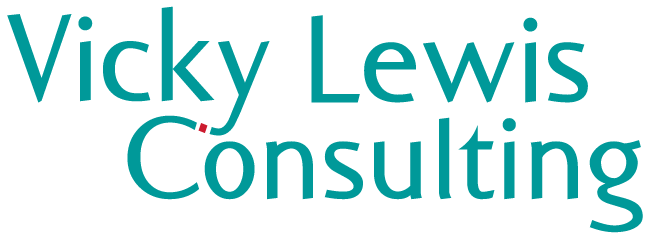International Strategy for Higher Education Institutions
International Strategy for Higher Education Institutions

Posted on by Vicky Lewis
 In the first two blogs in this series, I explored why it’s important to engage your community when creating an international strategy and proposed some tips and guidelines on doing this effectively.
In the first two blogs in this series, I explored why it’s important to engage your community when creating an international strategy and proposed some tips and guidelines on doing this effectively.
Now I’m going to share two case studies, drawn from strategy projects I’ve worked on with universities, to illustrate different approaches to engagement. Each institution’s context and ambitions are different, so there is no ‘one right way’ of doing this, but I hope this blog generates some useful ideas.
It’s worth noting that the international strategy development process can be relatively short and sharp (e.g. 2-3 months from start to finish) or considerably longer (e.g. the best part of a full academic year). (If interrupted by a pandemic, change of leadership or other significant event, it can take longer still.)
In a number of cases, I’ve been involved in the full development process (both long and short). In other instances, I’ve been invited to help at specific points in the process: for example, initial research and horizon scanning at the start of the process; stimulating discussions part-way through the process; or providing a ‘critical friend’ review of a draft strategy towards the end of the process.
In this blog, I’m going to focus on cases where I’ve been involved from start to finish.
As Naomi Eagling commented on LinkedIn following my last blog post, when engaging colleagues in strategy development, it’s a challenge to ‘hit the balance between bottom-up and top-down’, especially if trying to do so ‘at pace’.
As you’ll see from the case studies, a crucial element of securing constructive engagement while moving forward swiftly – whether the consultation is steered from the top, grown from the grass roots or managed from the middle – lies in the preparation, set-up and early discussions.
Context:
This modern university with a modest international footprint had identified internationalisation as one of the enabling 5-year strategies supporting its new strategic plan. This would be its first international strategy and there was little understanding of international ambitions beyond international student recruitment, so it was important to help staff and other stakeholders to develop a broader view. Leaders recognised that the engagement process should be an iterative one, extending over a nine-month period, punctuated by key milestones.
Features of the engagement process:
Six internationalisation workstreams were identified (recruitment, collaborative partnerships, research, employability, curriculum, and people and culture). For each workstream, a task group was set up, led by an appropriate member of the Senior Leadership Team (SLT). These task groups included staff (and in some cases students) with an active interest in the topic from across Schools and Professional Services. Each group was tasked with producing a short scoping paper for their workstream, circulated to all members of SLT. As further preparation for a dedicated two-hour SLT+ (ie. SLT plus invited others) discussion on internationalisation, each group was asked to articulate (in a sentence or two) why their particular facet of internationalisation is important to the university and to spell out what success in it would look like in 1, 3 and 5 years’ time.
This preparatory work was very effective in getting people to think deeply about different aspects of internationalisation ahead of the two-hour workshop, so that we could derive maximum value from a relatively short session. We chose to have only two breakout discussion groups, each focusing on a workstream which required further debate as it presented particular challenges and/or opportunities to the institution.
At the SLT+ workshop we secured commitment from the heads of each academic school to complete an internationalisation matrix to establish baseline information on activities and outcomes.
Our preparatory work and the insights from the workshop provided enough content to draft a consultation paper proposing a strategy framework and highlighting key discussion questions, which was debated and critiqued at both Academic Board and Executive Group.
The iterations continued with a wider consultation across the university community, using surveys, one-to-one and group interviews, slots at School and Professional Service executive team meetings, discussion at formal committees, a paper to Council etc.
The baseline information gathered early on in the process helped to inform an implementation plan (with targets) which was developed during the latter stages, as the strategy itself was being finalised. By the time the strategy document was completed and signed off, there was strong awareness and buy-in, reflecting a genuine cultural shift and broadening of understanding.
Good practice:
Context:
This highly regarded and distinctive university felt it was punching below its weight in terms of international profile and reputation, so embedded some clear international objectives within its new institutional strategy. Along with five other strategic aims, ‘international engagement and impact’ was identified as warranting its own core plan in support of the university strategy. One of the reasons for bringing in external expertise to help develop the international plan was to produce it relatively swiftly (within around two months) so that it could (a) act as a model for the other core plans and (b) provide a framework for investment, including in areas where an urgent step-change in approach was needed.
Features of the engagement process:
The kick-off event for development of the plan was an all-day away-day for the senior leadership team which was devoted in its entirety to the single topic of internationalisation. This was a strong signal that it was a high priority and a rare opportunity to engage in in-depth discussion with around 30 senior leaders. It was therefore important to prepare well and optimise the programme to secure a clear steer on institutional priorities.
A number of short papers were prepared for advance reading, covering external context, benchmarking and internal context. A paper had also previously been taken to the university’s resources committee, highlighting those international-related areas in need of investment and the decisions that would need to be taken. This meant that everyone at the away-day was on the same page in terms of understanding both the wider internationalisation context and the institution-specific pinch-points.
The day itself was pacy and highly structured. It included a brief scene-setting presentation followed by several table work exercises exploring the University’s primary drivers for international engagement, the top opportunities (and how to grasp them), and guiding principles for growth. The main conclusions from the discussions were captured on templated handouts.
Key topics and associated questions had previously been identified and much of the day was devoted to very short thematic context pieces followed by table discussions (addressing quite specific questions), then quick-fire feedback from each table. The day concluded with a prioritisation exercise (top three things we have to do and why), which provided a valuable steer for developing the strategy.
Because of the desire for speed, this was a relatively top-down start to the process. However, because international strategic aims were integrated into the main university strategy, there had already been wider conversations on the topic. Following the away-day, there was further engagement with representatives of a broad range of stakeholder groups. Dialogue was framed (but not constrained) by the away-day outputs and there was a strong focus on testing the emerging strategy against equality, diversity and inclusion (EDI) principles.
The culture of the institution (well-organised and decisive) helped enormously in sticking to deadlines and meeting milestone dates. As a result, it was possible to produce – within a couple of months – a new international strategy with high levels of commitment to the long-term vision and some concrete first steps.
Good practice:
At other institutions, good practice has included:
Of course, there are always lessons to learn: activities that fall flat and things you’d do differently next time. What works best will depend on the organisational culture and stage of ‘international maturity’ of the institution.
However, if you bear in mind the ‘three Is’ highlighted in my last blog (Iterative, Inclusive, Interactive), this can help to keep you on track to produce a strategy that is embedded, supported and actionable.
If you have any questions about international strategy creation, or are facing specific challenges, please let me know (either in the comments below or via one of these channels) as I’m planning to continue this series.
I’ll keep sharing tips based on what I think might be helpful but it would be great if I can also ensure future blog posts address challenges that others have identified.
|
|